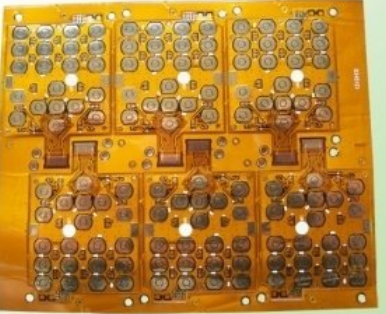Broadband access networks generally provide the last mile connection-that is, the connection between netizens and the backbone network.
The backbone network is also called the core network, which is shared by all netizens and is responsible for transmitting the backbone data stream. The backbone network is generally based on optical fiber, which can do better and large-scale (between cities and countries) data flow transmission. These networks generally adopt high-speed transmission networks (such as SONET/SDH) to transmit data, and high-speed packet switching equipment (such as ATM and IP-based switching) provide network routing. The industry insiders define that the transmission rate of the broadband backbone network should be at least 2Gbps.
This time we mainly introduce the broadband access network part, so the broadband technology of the backbone network will not be involved too much.
In terms of access networks, currently popular and very mature technologies in the world include xDSL technology, HomePNA technology, optical fiber access technology, Cable technology, and wireless broadband access network technology. These technologies are based on different hardware environments, and their respective capabilities and characteristics are also quite different. Let's take a look at each one and introduce them.
1. HomePNA technology

HomePNA (Home Phoneline Networking Alliance) is a non-profit organization established by many world-renowned telecommunications groups to promote the application of data transmission technologies based on many telephone networks. They formulated the "HomePNA Technical White Paper" in 1998 and used many The telephone network provides broadband data access services and adapts to the market’s needs for broadband access.
HomePNA technology is symmetrical data transmission, and its two-way transmission bandwidth is 1Mbps (HomePNA V1.0 standard) or 10Mbps (HomePNA V2.0 standard), and its transmission distance is then 100-300 meters.
HomePNA technology uses the existing phone line to access the Internet at high speed without changing the original phone settings, and the Internet access speed is fast, the Internet time is unlimited, and it has a good cost performance; it supports the simultaneous transmission of voice and data on the phone line, that is, Internet access while making a call; RJ-11 Ethernet interface is provided, and a telephone line can be used to construct a network to easily establish a 1Mbps/10Mbps local area network connection.
HomePNA technology is easy to use, and can also be combined with ADSL, Cable Modem, Ethernet technology, etc. to expand its use form, suitable for Internet access or network interconnection in residential quarters, hotels, etc., and supports multimedia systems and multimedia applications, such as IP phones, VOD video on demand, video conference, etc. However, its transmission speed and transmission distance determine its application range is very limited, and it is a better choice for home broadband access.
2. xDSL technology
DSL (Digital Subscriber Line) technology is a broadband access technology based on ordinary telephone lines. It transmits data and voice signals separately on the same copper wire. The data signals do not pass through the telephone exchange equipment, which reduces the number of telephone exchanges. In addition, you don’t have to dial up, it’s always online, which belongs to the way of dedicated line Internet access. Circuit board cloning means that using xDSL to access the Internet does not require you to pay the additional telephone charges.
For historical reasons, the copper wire access network of many telephone netizens constitutes an important part of the entire communication. It is widely distributed and accounts for a large proportion. Its investment accounts for 70%-80% of the total investment in transmission lines. How to make full use of this part is precious Resource design for new broadband services is an important task for the development of access networks in the near and mid-term. And xDSL can be an effective broadband access technology that makes full use of copper wires.
The "x" in xDSL represents various digital netizens' loop technologies, including ADSL, RADSL, HDSL, VDSL, and so on.
ADSL technology
ADSL (Asymmetric Digital Netizen Line Loop) has been praised by developed countries such as Europe and the United States as "the express train on the modern information highway.", A new, faster and more efficient access method after ISDN.
ADSL is an asymmetric DSL technology. The so-called asymmetry refers to the fact that the uplink rate of the netizen line is different from the downlink rate. The PCB copy board has a low uplink rate and a high downlink rate. It is especially suitable for the transmission of multimedia information services, such as video on demand (VOD), Multimedia information retrieval and other interactive services. ADSL supports an upstream rate of 512Kbps~1Mbps and a downstream rate of 1Mbps~8Mbps on a pair of copper wires, and the effective transmission distance is within the range of 3~5 kilometers.
There are two very mature ADSL standards-G.DMT and G.Lite. G.DMT is a full-rate ADSL standard that supports high-speed downlink/uplink rates of 8Mbps/1.5Mbps. However, G.DMT requires a POTS splitter installed on the netizen end, which is very complicated and expensive; G.Lite has a lower rate and downlink /Upstream rate is 1.5Mbps/512Kbps, but complicated POTS splitter is omitted, the cost is lower and it is easy to install. In terms of applicable fields, G.DMT is very suitable for small or home work places (SOHO), while G.Lite is more suitable for ordinary home netizens.
ADSL is the more mature one of the many DSL technologies at present. Its bandwidth is larger, the connection is simple, and the investment is small, so it develops very fast. At present, the domestic telecommunications departments in Guangzhou, Shenzhen, Shanghai, Beijing, Chengdu and other places have successively launched ADSL broadband access services, and regional applications are developing rapidly, but from a technical point of view, ADSL can only be used as a transitional approach for broadband services.